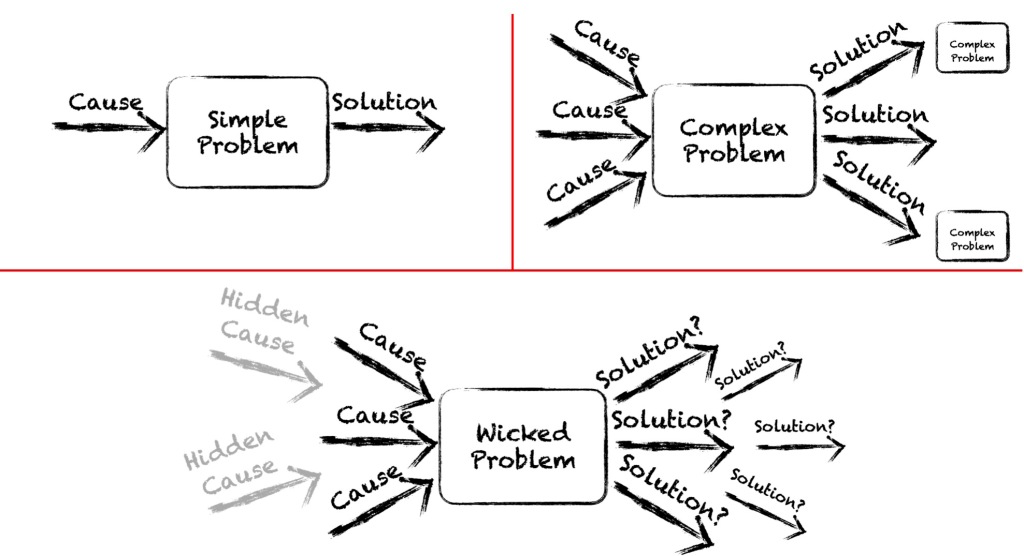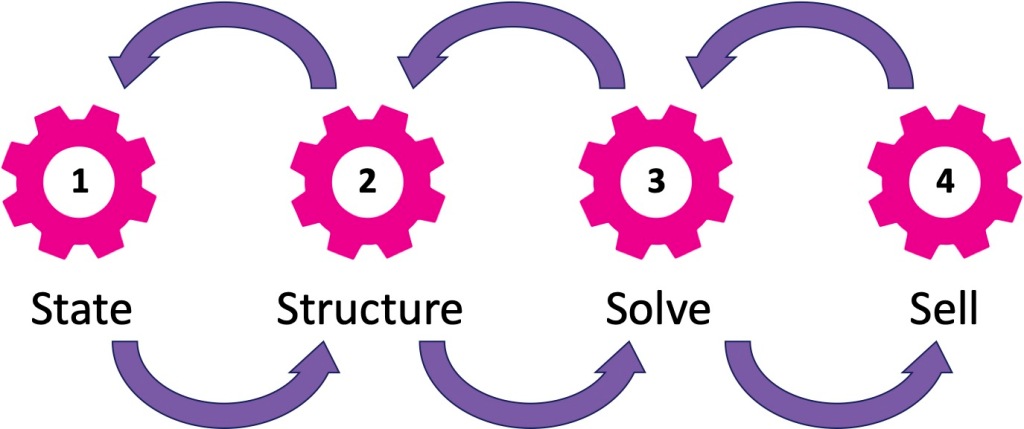
We are all problem solvers. Whether it be trying to find our car keys, which we put down somewhere when we came home from work or trying to solve some of the world’s more gnarly issues like climate change, global pandemics or nuclear arms proliferation.
Human beings have the unique ability not just to individually work out ways to fix things but also to collaborate with others, sometimes over great distances, to address great challenges and seemingly intractable problems. How many of us though, have thought about what we do when we try to solve a problem? Do we have a method for problem solving?
As Albert Einstein once said: “We cannot solve our problems by using the same kind of thinking we used when we created them.” This being the case (and who would argue with Einstein) it would be good to have a bit of a systematic approach to solving problems.
On the Digital Innovators Skills Programme we spend some time looking at types of problem as well as the methods and tools we have at our disposal to address them. Here, I’ll take a look at the technique we use but first, what types of problem are there?
We can think of problems as being one of three types: Simple, Complex and Wicked, as shown in this diagram.

Simple problems are ones that have a single cause, are well defined and have a clear and unambiguous solution. Working out a route to travel e.g. from Birmingham to Lands’ End is an example of a simple problem (as is finding those lost car keys).
Complex problems tend to have multiple causes, are difficult to understand and their solutions can lead to other problems and unintended consequences. Addressing traffic congestion in a busy town is an example of a complex problem.
Wicked problems are problems that seem to be so complex it’s difficult to envision a solution. Climate change is an example of a wicked problem.
Wicked problems are like a tangled mess of thread – it’s difficult to know which to pull first. Rittel and Webber, who formulated the concept of wicked problems, identified them as having the following characteristics:
- Difficult to define the problem.
- Difficult to know when the problem has been solved.
- No clear right or wrong solutions.
- Difficult to learn from previous success to solve the problem.
- Each problem is unique.
- There are too many possible solutions to list and compare.
Problems, of all types, can benefit from a systematic approach to being solved. There are many frameworks that can be used for addressing problems but at Digital Innovators we use the so called 4S Method proposed by Garrette, Phelps and Sibony.
The 4S Method is a problem-solving toolkit that works with four, iterative steps: State, Structure, Solve and Sell.

- State the Problem. It might sound obvious but unless you understand exactly what the problem is you are trying to solve it’s going to be very difficult to come up with a solution. The first step is therefore to state exactly what the problem is.
- Structure the Problem. Having clearly stated what the problem probably means you now know just how complex, or even wicked, it is. The next step is to structure the problem by breaking down into smaller, hopefully more manageable parts each of which can hopefully be solved through analysis.
- Solve the Problem. Having broken the problem down each piece can now be solved separately. The authors of this method suggest three main approached: hypothesis-driven problem solving, issue-driven problem solving, or the creative path of design thinking.
- Sell the Solution. Even if you come up with an amazing and innovative solution to the problem, if you cannot persuade others of its value and feasibility your amazing idea will never get implemented or ever be known about. When selling always focus on the solution, not the steps you went through to arrive at it.
Like any technique, problem solving can be learned and practiced. Even the world’s greatest problem solvers are not necessarily smarter than you are. It’s just that they have learnt and practised their skills then mastered them through continuous improvement.
If you are interested in delving more deeply into the techniques discussed here Digital Innovators will coach you in these as well as other valuable, transferable business skills and also give you chance to practice these skills on real-life projects provided to us by employers. We are currently enrolling students for our next programme which you can register an interest for here.
Happy New Year from Software Architecture Zen.

